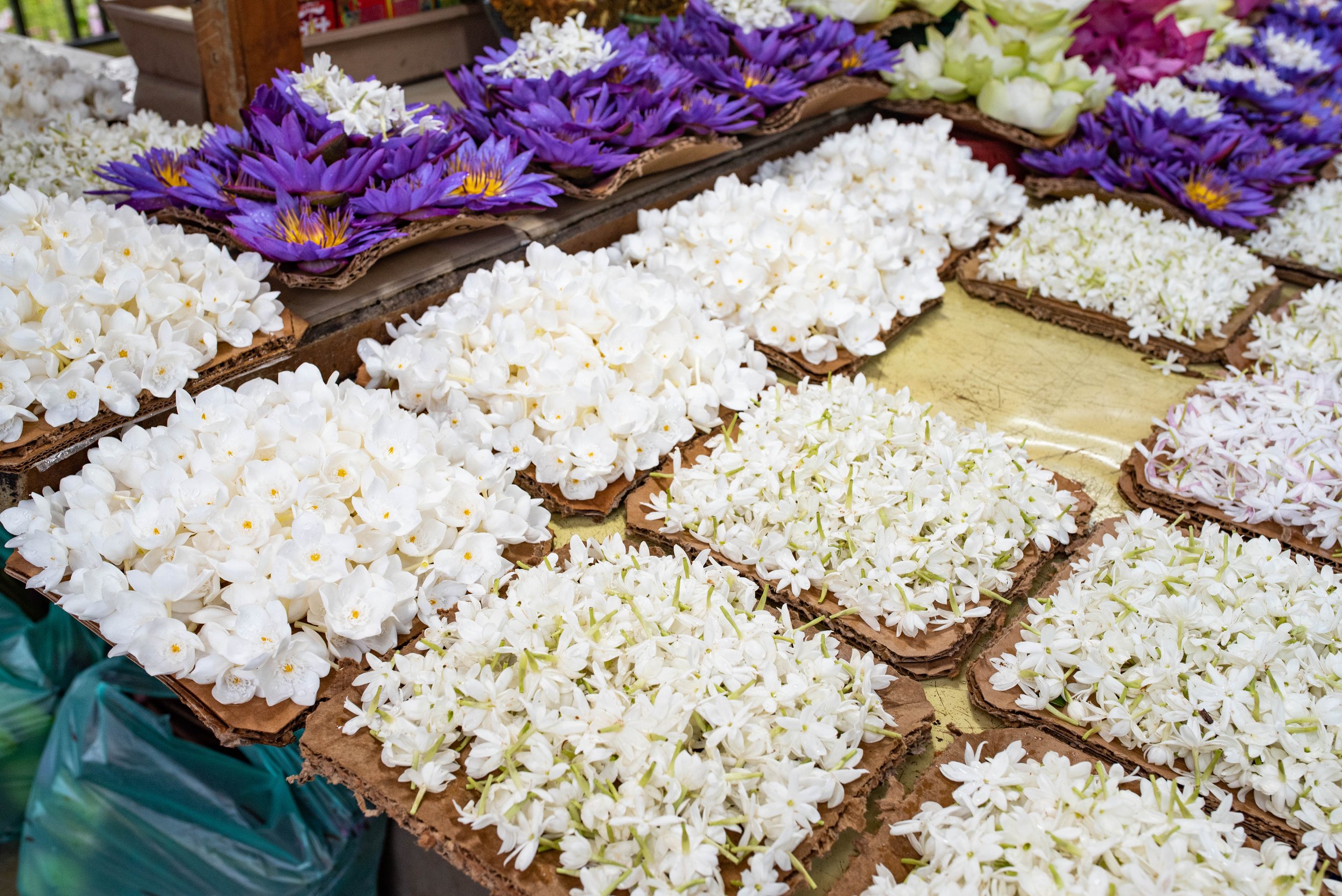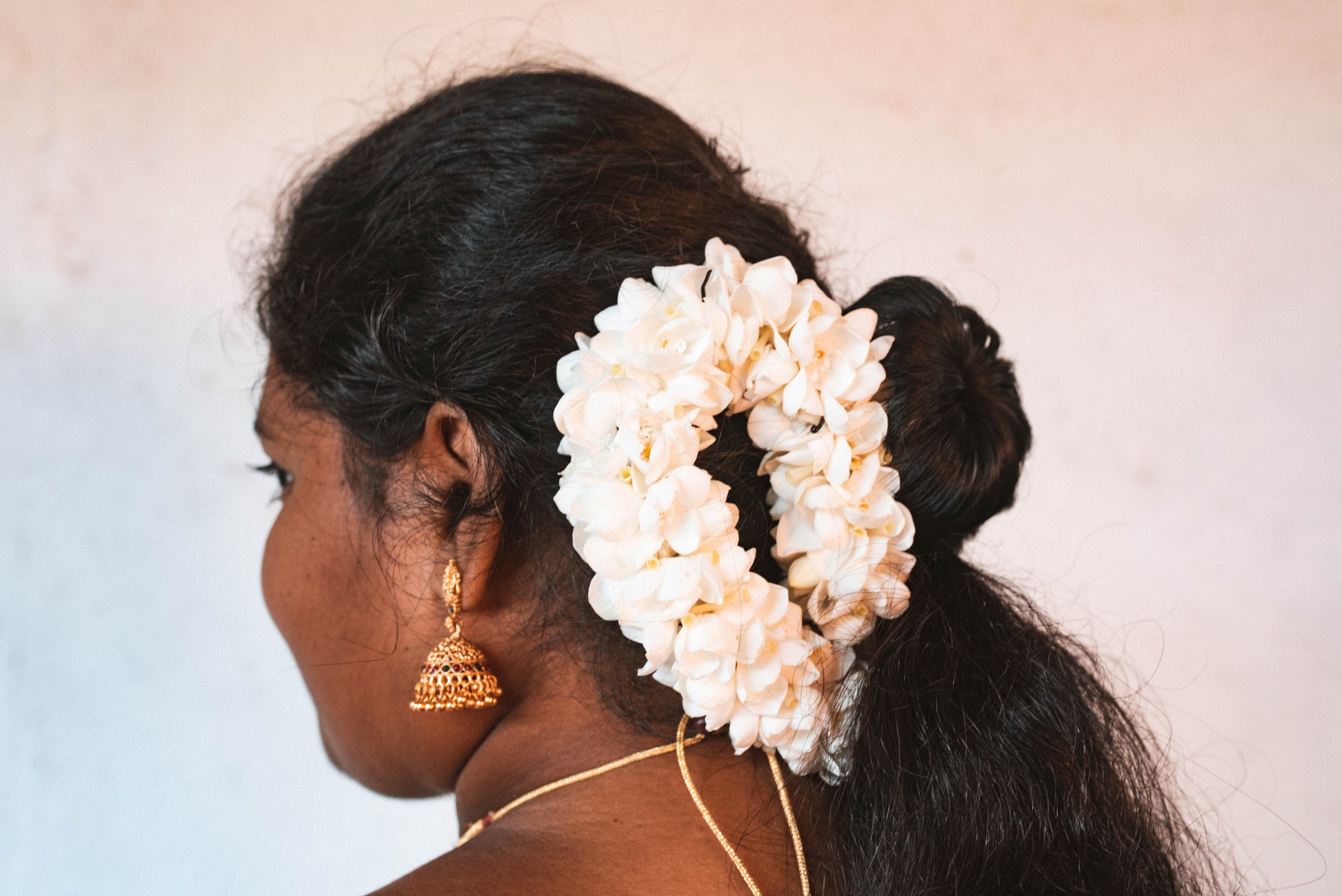Cultivated Grant Floral Explorations Part 1: Jasmine and Idda Flowers
When I found out that I was one of the recipients of the Cultivated Grant sponsored by Christin Geall, London Flower School and Cultivating Place, I was ecstatic! I was really feeling a push to explore sustainable floriculture in different countries at the time and feel inspired by small community networks. When I was younger, Sri Lankan flowers were the first to introduce me to the concept of how flowers hold deep meaning within a community, so I wanted to dive deeper into this country’s connection to floriculture. There wasn’t a specific flower I was interested in while applying, rather I wanted to learn more about floricultural landscapes across different regions of Sri Lanka, while giving myself the freedom to go down a specific floral rabbit hole if I felt inspired.
On my way to Sri Lanka, I kept thinking about jasmine flowers. They are hands down my favourite floral scent and though they hold such cultural significance, I didn’t know much about them. Even the faintest whiff of Jasmine creates happy nostalgic feelings, so they hold a certain power over me. My religious affiliation growing up was Buddhism, which meant simple white flowers adorned personal shrines in homes and larger shrines in temples. It was part of our daily practice that in the evenings, we would pick several flowers from our gardens and offer it to the statue of Buddha, along with incense and light. I thought surely there must be jasmine farms all over Sri Lanka to account for both daily needs and special events. What I found out was quite contrary to what I thought.
Floristry perspective
My first encounter with jasmine flowers during this trip was in Hatton. One of my family’s contacts, Ronson, led us to a school teacher/ florist named Ravi. He invited us to check out his latest design work at a Tamil wedding, so we drove 3 hours from my parent’s place in Sigiriya to get a glimpse of this wedding celebration in Hatton. We were greeted by lovely individuals who were keen to make sure we were comfortable and had a good view of the event. This is what I loved about Sri Lankan hospitality. Whether you were a complete stranger or part of the family, you were taken care of during visits. We felt so grateful to have this opportunity during our short stay.
Right off the bat, I noticed almost every woman and young girl at the venue had white flowers that looked like jasmine adorned in their hair, which was different from Sinhalese weddings. I later learned that most of these flowers were Idda flowers.
The wedding florals consisted of artificial flowers used in the larger background installations, and fresh flowers in the central offerings and floral garlands/maalais worn by the bride and groom. It made me think about the sustainability comparison between artificial floral installations recycled between many weddings and a singular production of fresh flowers for large scale installations every time there was a wedding. I’m curious about the impact of both of these processes on the planet, and whether the reused artificial flowers will have a lesser effect after a certain number of grand fresh flower installations. Especially when you consider the effort taken to grow the flowers, create intricate designs and transport them all across Sri Lanka.
After the wedding, we stopped in front of a kovil, where a few booths were set up with jasmine garlands for the attendants to purchase. I wanted to see how these simpler garlands were produced and hopefully immerse myself in the smell of jasmine. What I found was that 2 different kinds of white flowers were present. One variety, what we imagine when we think of jasmine (Jasminum sambac), was present in small quantities, while another, more robust variety named Idda flowers (Wrightia antidysenterica) were present in larger quantities. Just imagine my disappointment when I realized that these idda flowers and buds had no smell!
As we were inquiring about these flowers, I was mesmerized by the fast paced motion of hands creating garlands. Different knots for different styles. Perhaps these techniques can be used for wedding garlands in Canada!
Once Ravi finished his job at school, we met him at his home. What I came to learn was that the bridal necklaces/maalais we saw took anywhere between 5-8 hours to make and are about 2.5 feet long. Ravi charges 20,000 Rs/$87 for two necklaces. Ones made of fresh roses cost about 12,500 Rs/ $54 each. Many Idda flower buds were used to create intricate designs, along with roses, marigolds and chrysanthemums. During the creation of the maalais, the florists can bring in their own creative flair with the placement of different types of flowers and folding techniques. We got to see some of Ravi’s designs in the photos he showed us, and I was blown away by his craftsmanship and patience! Perhaps this is similar to knitting where you come into a meditative trance. He mentioned that he started his floral journey when he was 12 and it takes about 3 years for someone to master the techniques with their hands.
As for sourcing flowers, Ravi sourced his roses from Banadarawella, and they cost about 70-160 ($0.30-40.70) Rs per flower. During February the price per flower can go up to 500-600 ($2.17-$2.60) Rs. To put things into perspective, you can sometimes get a lunch of rice and curry for around 500 Rs. These flowers harvested at different sites in Sri Lanka arrive via train or bus, and the drivers or coordinators usually get around 500 Rs for delivering.
Ravi’s go to materials while doing the flower garland demonstration was plastic string, similar to skinny plastic ribbon often found in craft stores. He also mentioned that whenever folks weren’t able to afford roses in their designs, he used silk/plastic rose petals sold in stacks. I inquired about what they used before plastic string came along, which was apparently only introduced to their community around 5 years ago and now play an integral role in design work. Ravi said prior to the plastic string, they used banana stalk. Usually the banana stalk was stripped, dried in the sun, then put out in the morning to collect dew and finally bundled up. A pretty strenuous process that often dyed hands black. When it came time to create the necklaces, the dried bundles were soaked in water for about 3 hours before use so they were flexible. Aside from the time saved using plastic string instead of banana stalk, the florists also had to deal with fungal issues with moisture that would render the whole process useless. When joining sections of the necklace, there was also a tendency for the banana stalk to rip apart. So at this time, this plastic string seemed to save the florists a lot of time and money, but I am curious whether things like raffia could eventually replace this plastic string.
Floral production in Daluwa and Puttalam
Whether it was Hatton or Kandy, whenever we asked street floral vendors where they got jasmine and Idda flowers from, they always said Puttalam. I had never visited Puttalam before and though we didn’t have any contacts in that region, we decided that this was a location we had to discover for ourselves.
We left around 5am with Ronson, who spoke Tamil, Sinhalese and English. Very useful skills when you need to communicate with whoever is willing to talk to you! Around 3 hours later we talked to folks at 2 different kovil sites, and were eventually led in the direction of Daluwa - a nearby town. This was the most mind blowing part of my trip. This region located on the East coast of Sri Lanka was very hot and sandy, but we passed by some of the largest outdoor vegetable agricultural zones I have seen so far! There were acres and acres of okra, peppers, tobacco and more with overhead irrigation in place. I had initially thought Nuwara Eliya was the largest producer of vegetables for Sri Lanka with their temperate conditions, but this agricultural landscape opened up a window into a brand new world.
When I talked to a few farm managers, they mentioned that even though they were right next to the Indian Ocean, they were able to drill deep into the ground to get fresh water instead of ocean water. There was manure, coconut coir and fertilizers all mixed into the sand, and by the looks of it, the plants were doing just fine!
We finally came across Rani’s Idda flower farm and nursery, which was looked after by Chandra and her daughter. They were in the process of propagating samman pichcha, as well as idda plants for nursery sales. The jasmine plants at the property were quite small, while the idda plants were good sized shrubs.
Jasmine Plant used for propagation
Idda flower shrub
We were told that the Idda flowers had to be harvested in bud in the afternoons everyday around 3pm, because that’s when the buds were at the proper size. Often they would get orders from all over Sri Lanka, and the ladies would pick these buds for about an hour or so with 4-5 others, filling up garbage bags full for transport by bus. Luckily the buds didn’t have to stay in water and could be transported dry. I was told that when the florists receive the buds, they can choose to put the flowers into water, which causes them to open up or use them in their current bud form. Ravi used these flowers mainly in bud form when designing necklaces. These buds lasted for about 3-4 days out of water, which makes them a great drought tolerant plant.
Overall this phase of the trip connected me to a brand new flower that I had previously brushed off as another type of jasmine. Though I was hoping to be connected to the scent of jasmine throughout the trip, I saw the value of Idda flowers that were so productive and capable of withstanding harsh growing conditions! They are now so integrated into the lives of Sri Lankans and within a short amount of time, have woven themselves into my appreciation as well.





















